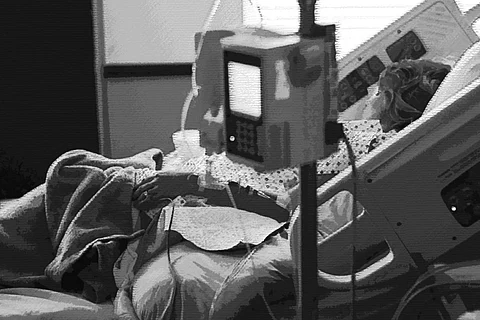

An Indian study has made a case for screening women with ovarian, primary peritoneal or fallopian tube cancer and those who have a family history of it, to be screened for BRCA gene mutations. Two mutations of the BRCA or Breast Cancer gene – BRCA1 and BRCA2 – have been found to impact an individual’s chances of developing breast cancer as well as ovarian cancer.
The study, published in the JCO Global Oncology in June 2021 – a journal published by American Society of Clinical Oncology – was done on a sample of patients between 23 and 86 years of age with the median age of 53, from nine centres across India between March 2018 and December 2018. Their blood samples were analysed at a laboratory in Bengaluru, and tested for germline mutation. A germline mutation is one that is passed on from parents to the child, i.e. there are high chances of it being hereditary. Of the 239 patients analysed, germline pathogenic or likely pathogenic BRCA1 and BRCA2 mutations were found in 21.3% (51) patients. BRCA1 mutation was found in 37 patients, and BRCA2 in 14 patients.
According to Dr Shekar Patil, senior medical oncologist at HCG, Bengaluru, and one of the authors of the study, the implications of screening women with ovarian cancers for BRCA mutations are two-fold. “Firstly, we hope to educate oncologists with the study to guide a patient for BRCA gene screening. If a person is found to have the germline mutations, their daughters, sisters, or mothers can also go for screening and take preventive and precautionary steps. Secondly, it has implications for therapeutic intervention. The line of treatment can be taken depending on whether the gene mutation found is somatic or germline,” he tells TNM.
A somatic mutation is one that occurs in any cell of a body except sperm and eggs, meaning, it is not passed on to children. It is only present in the cancer cells and is not hereditary. On finding out whether the gene mutation is somatic or germline, PARP inhibitors – a type of cancer drug that repairs DNA damage by preventing cancer cells from repairing and instead letting them die – can be used, Dr Shekar adds.
“BRCA mutation status can guide the use of poly (ADP ribose) polymerase (PARP) inhibitors, which are associated with favourable outcomes in patients with BRCA mutations. Patients with germline mutations act as a proband for further testing of first-degree relatives (cascade screening),” the study notes.
In the Indian study, a majority of the patients had ovarian cancer (230), eight had primary peritoneal cancer, and one had fallopian tube cancer. Of these, 15.1% (36) had a family history of ovarian cancer or breast cancer, with two patients having a history of both. According to the Centres for Disease Control (CDC), “around 3% of breast cancers (7,500 women per year) and 10% of ovarian cancers (about 2,000 women per year)” occur due to inherited mutations in the BRCA1 and BRCA2 genes passed on in families. Dr Shekar points out that screening for the BRCA1 and BRCA2 genes can help prevent both cancers: “Breast cancer usually occurs at an earlier age compared to ovarian cancer, which is more common in people above 50 years."
However, the study also makes a case for screening ovarian and/or breast cancer patients for BRCA gene mutations even if they do not have family history of the diseases. “Of note, our analysis suggests that, although the prevalence of BRCA1/2 mutations was higher in patients with family history of breast and/or ovarian cancer, a considerable minority of patients without such history (20.2%) also harboured the mutations,” the study said. It also adds that age was not associated with the prevalence of these mutations, and should not be a factor in deciding to screen a patient for germline mutations.
Dr Shekar points out that this is the first multi-centre study in India to report these findings. The nine centres from where patients were recruited were in Mumbai, Hyderabad, Delhi, Kolkata and Bengaluru. “The strength of our analysis is the inclusion of patients from multiple centres in India, of all ages in the adult group, of all histologic subtypes, and those with or without relevant family history. This makes the results of this study generalisable to the patient population with ovarian cancer seen in routine practice in India,” the paper notes.
The lead author of the study is Dr Sudeep Gupta. The other authors of the study are Dr Senthil Rajappa, Dr Suresh Advani, Dr Amit Agarwal, Dr Shyam Agarwal, Dr Chanchal Goswami, Dr Satya Dattatreya Palanki, Dr Devavrat Arya, Dr Shekar Patil, and Dr Rohit Kodagali.